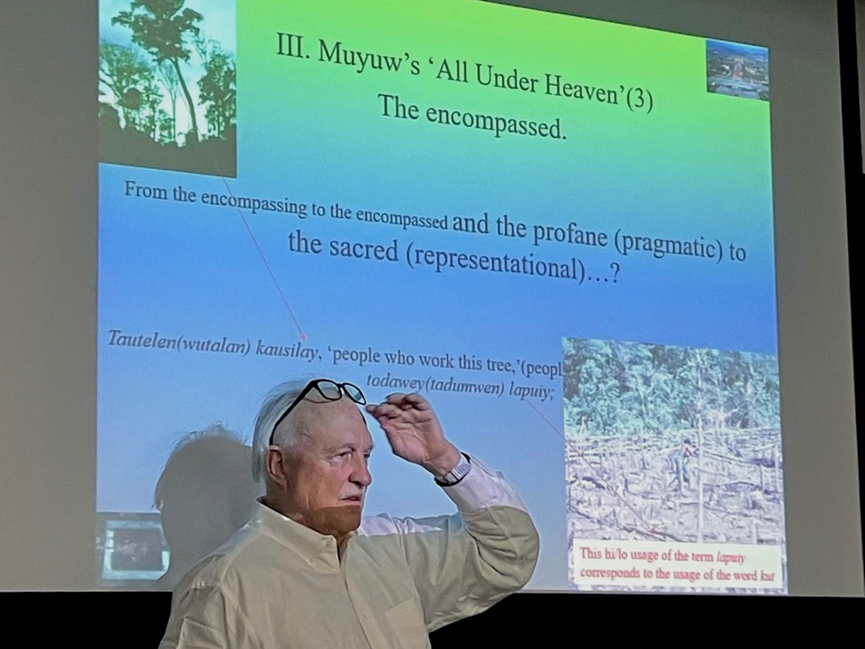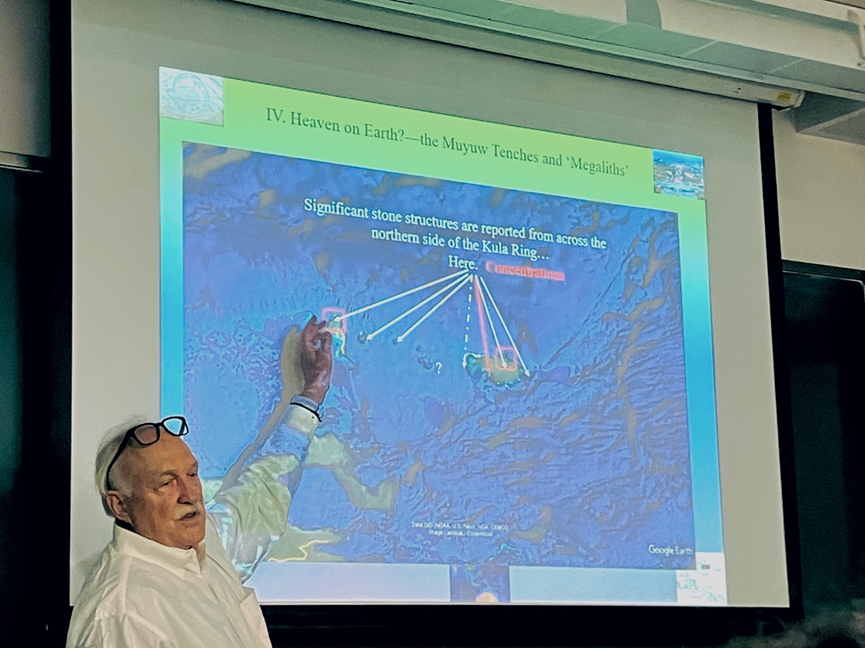Lecture | Why are the Southern Cross and the Big Dipper the same?
Oct 24, 2023
Peking University, October 20, 2023: Frederick Damon, a professor in social anthropology at the University of Virginia, recently delivered a lecture titled “Tianxia in the Kula Ring? Why are the Southern Cross and the Big Dipper the same?” at Peking University (PKU), as part of the “Anthropological Lecture at PKU.”
The lecture was moderated by Wang Mingming, a professor at PKU's Department of Sociology.
In his lecture, Professor Damon concentrated on the motions of the Milky Way, trying to put a new perspective on the interpretation of the cultural history and significance of Woodlark Island in Papua New Guinea. The focus of the lecture was to build a comparative perspective between the Indo-Pacific cosmology and that of traditional Chinese and to investigate the chronical simultaneity among many archaeological sites from East Asia southward to Oceania, spanning from the 9th to the 13th century.
Professor Damon started his lecture by mentioning a souvenir he received from a young Muyuw man — a leaf with some stars painted on it. At first, he did not pay much attention to it until he realized that it reflected the importance of constellation in local culture, which he had neglected for many years.
Professor Damon subsequently discussed the cultural history and significance of Woodlark Island, also known as Muyuw, located in Milne Bay Province and the Solomon Sea, Papua New Guinea, and explored the relationship between the island's social structure and the location of the Milky Way. He figured out that not only the location but also the seasonal motion of the Milky Way are highly interwoven with the growth of crops and the overall well-being of the local community.
The correlation between the constellation and people’s understanding of location can be seen not only in the Indo-Pacific area, Professor Damon pointed out, but also in ancient Chinese recordings. The layout of Chang'an in the Han Dynasty (206 B.C. - 220 A.D.), like the Trobiand Island, coincided with the motions of the Milky Way.
Professor Damon also linked many archaeological sites, highlighting that the layout of all of them can be interpreted through the motion of stars. Such a similarity and the chronical simultaneity combined offer an interesting possibility for scholars to investigate. Thus, he concluded that “all of them fix a model of heaven on earth.”
Professor Wang Mingming commented that Professor Damon’s research was very inspiring when he saw the layout of the model on Earth as a microcosm of heaven in Damon’s presentation. As for the fieldwork, Professor Damon’s endeavor of finding out the deep structure of local society reminds the audience that local cosmology is a worth noticing field for anthropologists, Wang noted, adding that Professor Damon’s study echoes the ontological turn in anthropology, a field better to be called ethno-geography.
Written by: Zhang Bo-Lei, Chen Li-Tsai
Edited by: Fan Xueyuan

